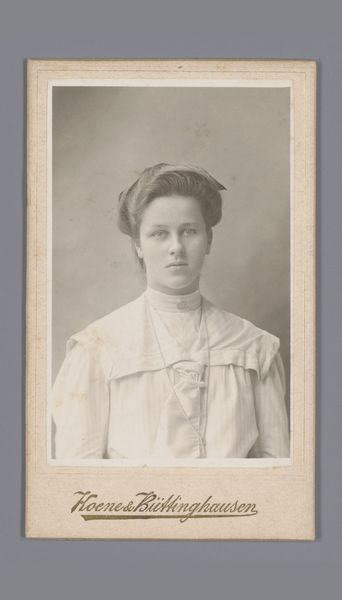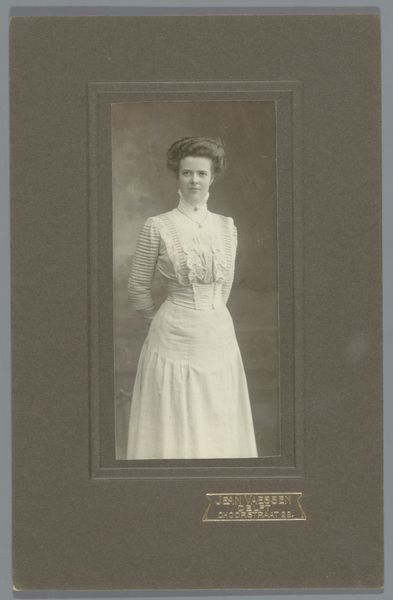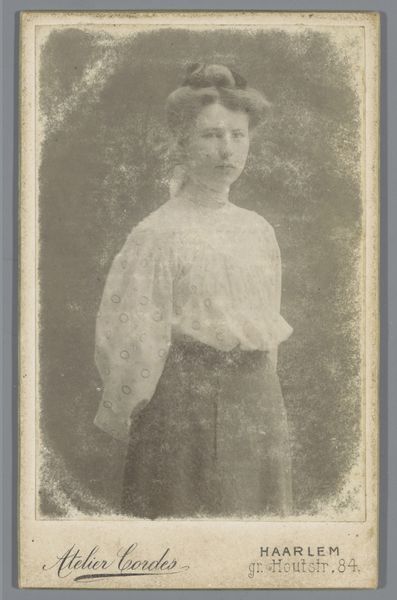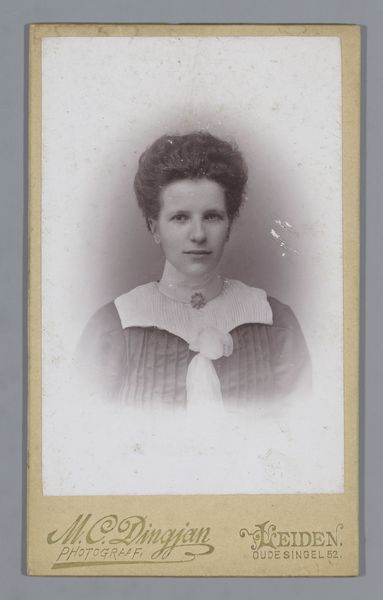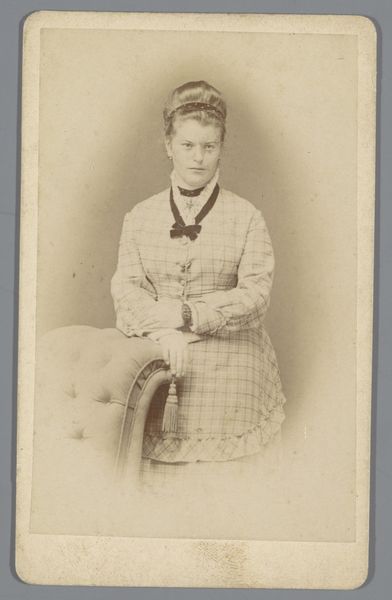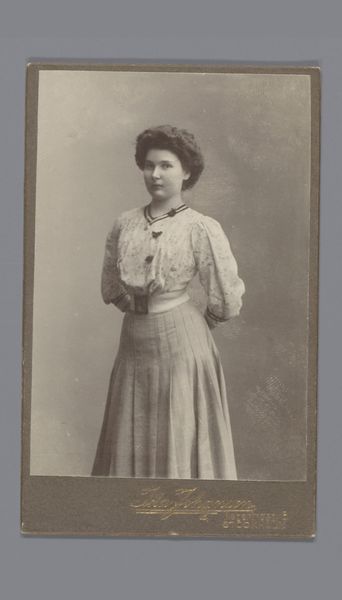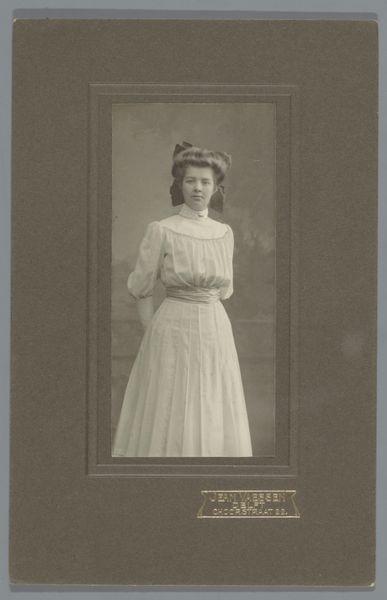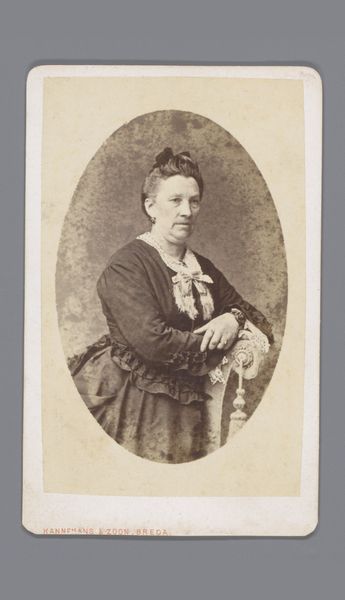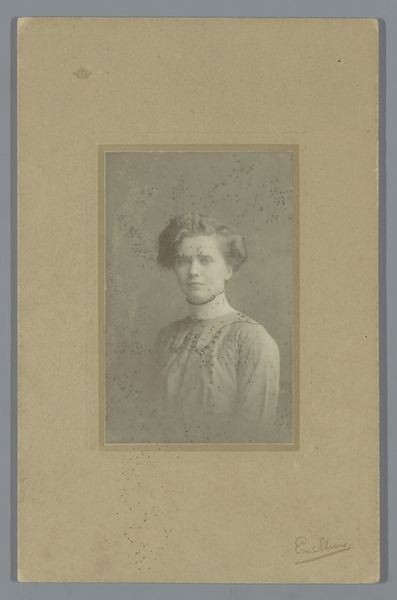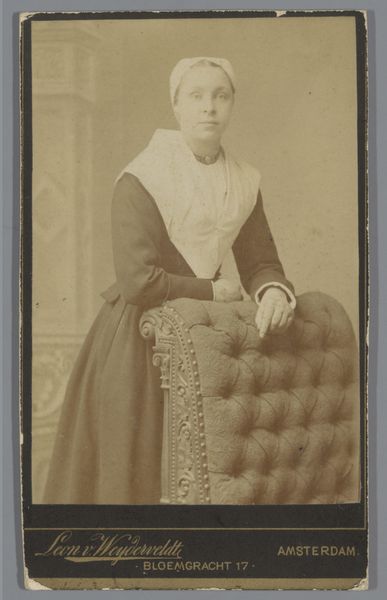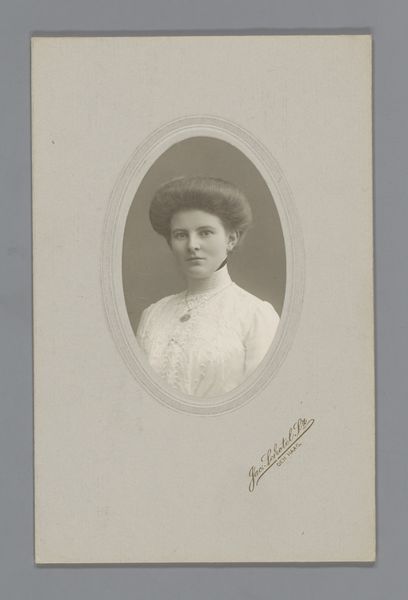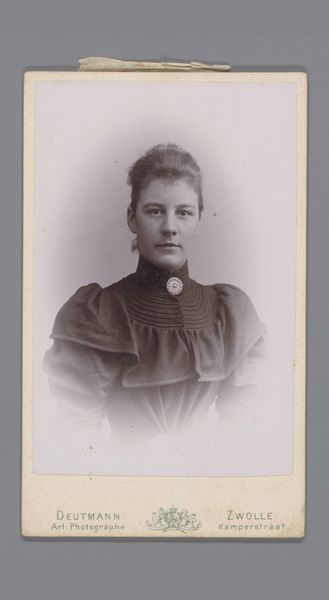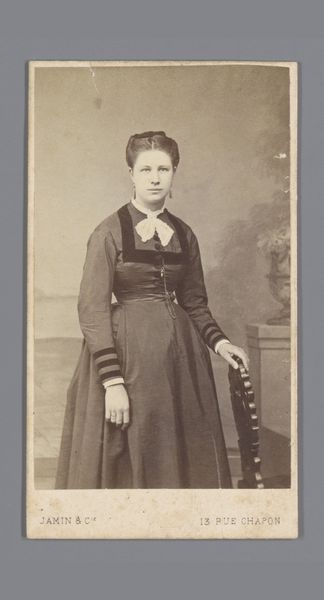
photography, gelatin-silver-print
#
portrait
#
photography
#
group-portraits
#
gelatin-silver-print
#
realism
Dimensions: height 106 mm, width 63 mm
Copyright: Rijks Museum: Open Domain
Editor: This is a photograph, "Portret van Johanna Geertruida Jonker," created sometime between 1905 and 1910 by Koene & Büttinghausen, made with gelatin silver print. The woman's posture strikes me. What does it communicate to you? Curator: Considering the material conditions of photography at the turn of the century, and the relative rarity of personal portraiture for the working class, I’m drawn to consider the economics and social status intertwined within this seemingly simple image. Who commissioned this portrait, and why? Editor: That's a great point. I hadn't considered the cost associated with having a professional photograph taken during that period. Does the gelatin silver print itself have any bearing on how we interpret this piece? Curator: Absolutely! Gelatin silver prints offered a certain level of reproducibility and clarity. But that smooth surface also served as a marketing of aspirations and of a social climbing of the subject within the frame. Was this Johanna presenting herself as aspirational in any way? The modest jewelry and clothing details, could those be her Sunday best? It provokes the role and gaze within material objects, especially concerning the photographic object's use and trade during that era. Editor: That’s so interesting. I hadn't considered how the materials used and the context of photographic production could influence the portrait's reading. Thanks for illuminating that. Curator: Of course. Focusing on the materials helps us see beyond the surface and ask critical questions about the work's historical and social significance. Considering these layers allows us to better understand art as not just objects, but reflections of broader socio-economic systems.
Comments
No comments
Be the first to comment and join the conversation on the ultimate creative platform.
